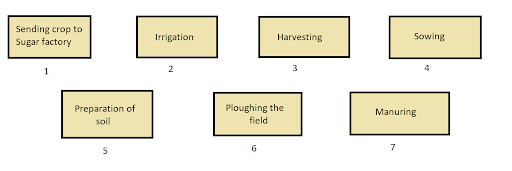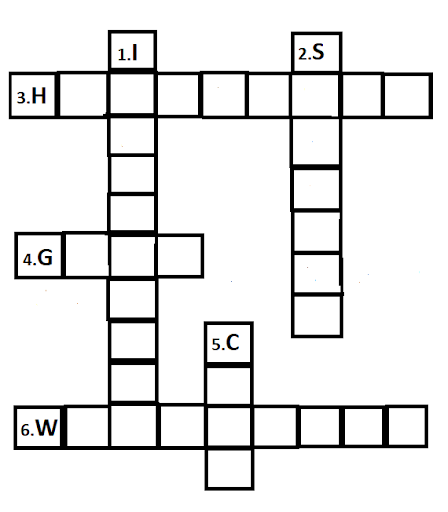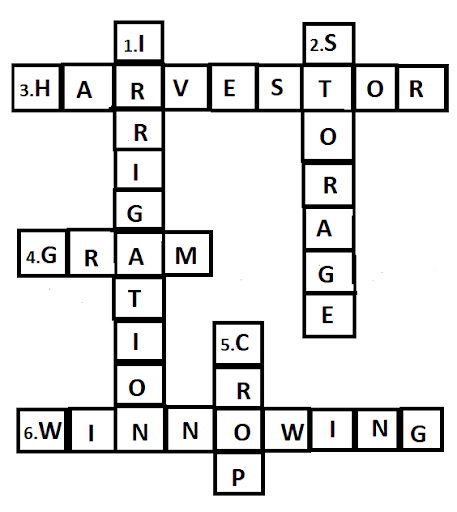NCERT Solutions for Class 8 Science Chapter 1 - Free PDF Download















FAQs on NCERT Solutions for Class 8 Science Chapter 1 - Crop Production and Management
1. How can I Download the NCERT Solution of Class 8 Science Chapter 1 from Vedantu?
To download the NCERT solutions pdf, the student should start by installing the Vedantu app. The next step after the installation is finished is to register on the Vedantu app with your basic details. Once that is done, then the next step is to simply search for the solutions that you want and click on the link to download the solutions pdf file.
Students can also download the PDF of NCERT solutions through our website. Here, they need to search their required chapter NCERT Solutions, and then click on the ‘Download PDF’ button. By clicking on this button, students can get the PDF on their registered email.
2. Are all the Answers that are Mentioned in NCERT Class 8 Science Chapter 1 Solution PDF Correct?
Yes, all answers are completely correct in the NCERT solved questions pdf. You can learn all the questions from the file without any hesitation. These answers were written by the most talented and experienced academic experts in India!
3. Mention Some Examples of Rabi Crop and Kharif Crop.
Some examples of Rabi crops are pea and wheat. A few examples of Kharif crops are maize and paddy.
4. What do You Understand by Irrigation?
Irrigation can be defined as the process of supplying water to crops at regular intervals of time.
5. Define Weeds.
In the simplest terms, weeds can be defined as the undesirable plants that grow in a field naturally along with the desirable crop. Most farmers remove these weeds at an early stage of growth so that these plants don’t interfere with the proper growth of the main crop.
6. What is NCERT Class 8 Science Chapter 1 all about?
NCERT Class 8 Science Chapter 1 is titled “Crop production and management”. This chapter teaches the students about crops, methods of irrigation, and everything related to crops. This chapter discusses all the topics in detail. For Chapter 1, you will find comprehensive solutions on Vedantu that will help you ace your tests and exams. You can also download the solutions for free.
7. What are the important topics covered in NCERT Class 8 Science Chapter 1?
The important topics covered in NCERT Class 8 Science Chapter Crop Production and Management are as follows-
Agricultural Practices
Basic Practices of Crop Production
Preparation of Soil
Sowing
Adding Manure and Fertilisers
Irrigation
Protection from weeds
Harvesting
Storage
Food from animals
8. How to study the first chapter of NCERT Class 8 Science?
You can study the first chapter of NCERT Class 8 Science in the following ways-
Learn the chapter topic wise. Make sure that you follow the syllabus outline of each chapter before you begin studying the chapter. This will ensure that you do not miss one single topic that is covered in a chapter.
Concentrate on learning the concepts of each topic before moving to the next. Concepts are what will help a student actually learn and understand what a chapter is all about.
Learn the important definitions. Once you understand the concepts it would not be difficult to memorize the definitions.
Practise solving all kinds of questions at the end of the chapter. The more you practise, the better you will get at your subject.
9. Is NCERT Class 8 Science Chapter 1 easy?
Yes, Chapter one of Class 8 NCERT Science is easy. The student should concentrate on learning and remembering the concepts of each chapter rather than mugging up the chapters. In this way, they will find the chapter to be very easy. Also, all the important questions and revision notes are available on Vedantu website and app to make learning easy.
10. How many chapters are there in NCERT Class 8 Science apart from Chapter 1?
Eighteen chapters are there in total in the NCERT Class 8 Science book. The chapters are all a mixture of Physics, Chemistry and Biology. Some of the chapters are even interconnected. Hence, it is very important to pay attention to all the eighteen chapters while you are studying the subject.






